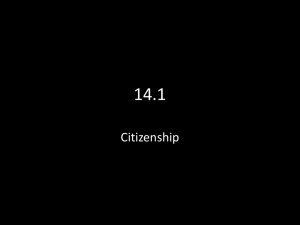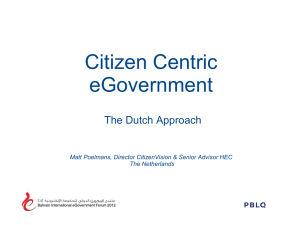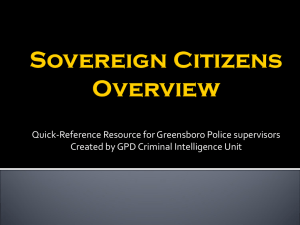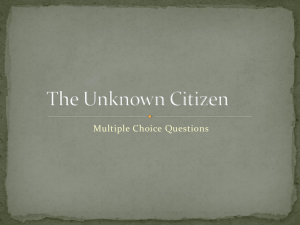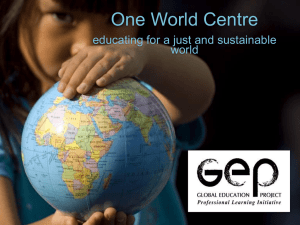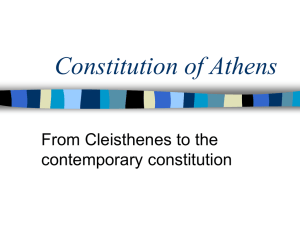350e97b5
advertisement
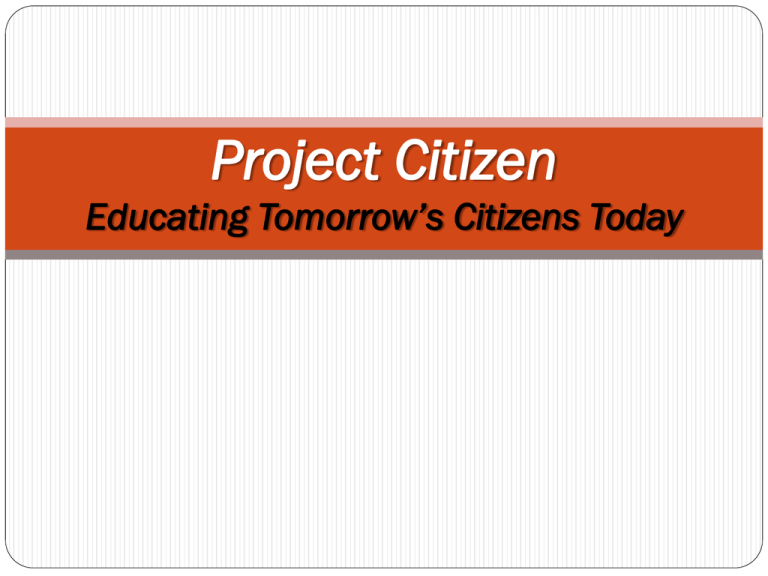
Project Citizen Educating Tomorrow’s Citizens Today Joseph E. Kahne, an education professor and researcher found that… “…students are more likely to be active in civic and political life after they leave school if they take part during their school years in civic education activities.” “Classroom-based activities have a statistically significant impact on students’ civic and political involvement and their intent to vote.” Educating for Democratic Citizenship Questions to Consider 1. What is the problem? 2. Who has the authority to resolve the 3. 4. 5. 6. problem? What is one viable solution to the problem? Who in the community might support your solution? …oppose it? How would you convince others to support you solution? How would you convince the responsible authority to adopt you solution? What is Project Citizen? Education for democratic citizenship Teaches students how to appropriately and effectively monitor and influence public policy Interdisciplinary instructional program for adolescents and adults • Focuses citizen engagement in self-governance • Applies learning to real world issues • Uses cooperative learning • Serves as a model performance assessment What are the Goals of Project Citizen? The primary goal of Project Citizen is to develop in citizens a commitment to active civic participation and self-governance by providing the knowledge and skills required for effective citizenship providing practical experience designed to foster a sense of competence and efficacy developing an understanding of the importance of civic participation Project Citizen Programs in Latin America Project Citizen has been implemented throughout Latin America in partnerships with various NGOs, universities, and ministries of education. Argentina Guatemala Bolivia Honduras Brasil Mexico Chile Panama Colombia Paraguay Costa Rica Peru Ecuador Venezuela What is the Sequence of Project Citizen? Students work together to identify and study a problem in their community. They propose a solution in the form of a public policy recommendation. They develop an action plan for getting their policy proposal adopted and implemented. Students present their work in a visual and written display and present it in a simulated public hearing. Although not required, in many instances students appear before the government authority responsible for enacting their proposed policy. Project Citizen- Step 1 Identifying public policy problems in communities Identifying Public Policy Problems Students identify public policy problems in their communities by discussing them with each other interviewing family members and other adults reading newspapers and other print sources listening to news reports on radio and TV Project Citizen - Step 2 Selecting a problem for study Problems in our community 1. Drugs 3. Pollution 2. Violence 4. What Criteria is Used to Select a Problem? Is the problem you selected important to you and other people in your community? 2) Does government have some responsibility to deal with this problem? 3) Will there be sufficient information about the problem to develop a good project? 4) Is there a realistic possibility of solving the problem selected? 1) Project Citizen - Step 3 Gathering information on the problem Gathering Information Students gather information on the chosen public policy problem from a variety of sources Interviews and surveys t Printed sources Radio and television t Libraries t Internet Scholars and professors t Lawyers and judges Community organizations and interest groups Legislative offices t Administrative offices Project Citizen – Step 4 Developing a display Our Problem Action Plans Alternate Policies Public Policy Visual Display Written Documentation Project Citizen - Step 5 Presenting the project to the public Step 6 - Reflecting on the Learning Experience What and how you and other students learned civic knowledge civic skills civic dispositions What you learned from being part of a team working to solve a problem What are the Instructional Advantages of Project Citizen? Throughout the project students have real world opportunities to practice English language learning skills – reading, writing, speaking Students connect with real problems and events in their communities Students integrate a variety of related concepts and ideas Students may use knowledge and skills from multiple disciplines Students work with clear, attainable goals What are the Instructional Advantages of Project Citizen? Students learn to cooperate with peers in group settings Students evaluate their own progress through self-assessment Students relate assessment activities to instructional activities Students benefit from the involvement of parents and other community members For more information contact Michael G. Fischer Educational Consultant Los Angeles, California, USA Ph: 818-610-9075 Email: mgfischerLA@yahoo.com Facebook: Michael G. Fischer 24 PROJECT CITIZEN A CIVIC EDUCATION PROGRAM AT THE BINATIONAL CENTERS IN PERU Civic Education at the Peruvian Binational Centers The Peruvian Binational Centers have been implementing Civic Education Programs with very positive results among their English teachers and students since 2004. The pilot program was carried out at the Chiclayo BNC with the support of the Center for Civic Education and the US Embassy in Lima. The program has three components: -Project Citizen is part of the ELT Advanced Program -READ Chiclayo -Summer English Language Institutes for Public School Teachers Proyecto Ciudadano – Mejores Ciudadanos Project Citizen for Better Citizens is a civic program, sponsored by the U. S. Embassy in Lima with the cooperation of the Peruvian Binational Centers, which aims to strengthen the Civic and Citizenship Education area of the Regular Basic Educativo System in Peru. The main objective is the integration and implementation of Project Citizen as a participatory project to be developed by high school students as part of the national curricula. MOU Agreement with the Ministry of Education of Peru “Project Citizen for Better Citizens” was approved to start under the Resolución Directoral 0166-2010ED, which was signed on February 09 of 2010 by the Peruvian Ministry of Education. This document legally authorizes the training of Peruvian Public School Teachers in Project Citizen, as part of the Peruvian National Curriculum for Public Education. Program objectives: To join efforts with the civil society in order to support, strengthen and enhance Civic Education at Public Schools in Peru, through the promotion of civic and democratic values. To promote a culture of peace and legality through workshops for public school teachers, improving their insight and understanding of the policies and governmental institutions that safeguard the coexistence of Peruvian Citizens. To reinforce youth education, raising awareness among high school students on the importance of a peaceful and organized participation of civil society in solving common problems in their neighborhoods and communities. Project Citizen program: A Diploma for a total of 220 hours is awarded to teachers upon the completion of the Project Citizen Program: -40 hours of training workshops -20 hours of research and project preparation -80 hours of in-class implementation -80 hours of monitoring students performance to undergo a Project Citizen program. Project Citizen tools in social networking: Project Citizen Showcases - Local Showcases - Regional Showcases Ámbitos y metas Public School teachers: 2010 - 2012 Regiones 2010 DOCENTES 0 2011 DOCENTES 0 2012 DOCENTES 95 TOTAL DOCENTES 95 0 2 0 2 108 57 30 195 AYACUCHO 0 16 42 58 CAJAMARCA 25 23 0 48 CUSCO 40 113 65 218 ICA 0 6 0 6 JUNIN 0 78 0 78 LA LIBERTAD 9 52 0 61 101 60 35 196 LIMA PROVINCIAS 0 5 0 5 MADRE DE DIOS 10 16 0 26 MOQUEGUA 28 0 0 28 PIURA 0 103 120 223 PUNO 28 22 0 50 TACNA 29 0 0 29 TARAPOTO 0 0 2 2 BINACIONALES 0 0 150 150 16 378 553 539 1470 LIMA 107 336 552 995 2465 AMAZONAS ANCASH AREQUIPA LAMBAYEQUE TOTAL


